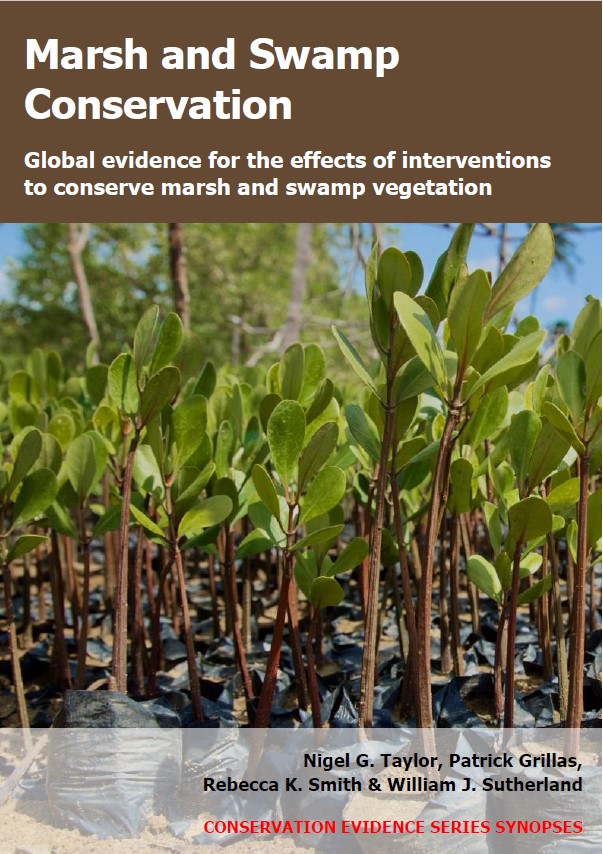Introduce nurse plants to aid focal trees/shrubs: brackish/saline wetlands
-
Overall effectiveness category Unknown effectiveness (limited evidence)
-
Number of studies: 1
View assessment score
Hide assessment score
How is the evidence assessed?
-
Effectiveness
30% -
Certainty
20% -
Harms
5%
Study locations
Supporting evidence from individual studies
A replicated, controlled study in 2005 on a mudflat in Florida, USA (Milbrandt & Tinsley 2006) reported that planting saltwort Batis maritima as a nurse plant had no clear effect on survival of planted black mangrove Avicennia germinans. Statistical significance was not assessed. After seven weeks, 6% of black mangrove seedlings planted into newly created saltwort patches were alive, compared to 11% of black mangrove seedlings planted into a bare mudflat. This followed fluctuations over the previous six weeks, when mangrove survival was sometimes higher in saltwort stands than on the bare mudflat (two weeks), sometimes lower (three weeks) and sometimes equal (one week). Methods: In June 2005, saltwort seedlings were planted into a mudflat, where a former mangrove forest had died off, to create patches of saltwort. The study does not clearly report patch number, density or size. Within five days, 18 nursery-reared black mangrove seedlings were planted into the saltwort and 18 were planted into the adjacent bare mudflat. Survival was measured over seven weeks.
Study and other actions tested
Where has this evidence come from?
List of journals searched by synopsis
All the journals searched for all synopses
This Action forms part of the Action Synopsis:
Marsh and Swamp Conservation
Marsh and Swamp Conservation - Published 2021
Marsh and Swamp Synopsis





)_2023.JPG)














